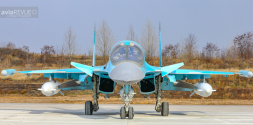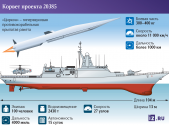June 26, 2024
Flying fishing: the airspace control system will detect drones
It allows direction finding of mini- and micro-UAVs at extremely low altitudes
In the Moscow region, a unique Airspace Control System (ACSS) has begun operation, which is capable of detecting not only airplanes or helicopters, but also mini- and micro-drones at extremely low altitudes and targeting them with air defense systems or electronic warfare systems. The developers told Izvestia about the capabilities of the equipment, which is already being used to protect important objects from UAVs.
"Baba Yaga" will not fly
SKVP is a network of radar stations with a fixed phased array antenna. They can be mounted on tripods, on vehicles and on the roofs of high-rise buildings, cell phone towers and even on the balconies of ordinary residential buildings. The radiation from such a radar is so low that it does not require a sanitary passport. Initially, it was developed as a civilian system for air traffic control, but the SMO made its own adjustments.
There can be 24 such radar stations in the SCS network. Each radar weighs 110 kg. The deputy chief engineer of the development company Central Design Bureau of Apparatus Engineering from Tula (part of the High-Precision Complexes holding of the Rostec state corporation) told Izvestia about this. According to the developers, the first systems are already operating in the Moscow region.
“The system can detect the most complex air target,” noted the deputy chief engineer. — To make the radar detect a fighter or bomber—this is available to any manufacturer in the world. We can detect such types of air targets as copter-type drones the size of a sheet of paper. We are guaranteed to detect a copter that carries a high resolution video camera, for example Mavic 2, at ranges of up to 4 km.
According to the developers, a Baba Yaga-type drone, as well as aircraft-type UAVs, for example, the Ukrainian Furies or Mugin, which strike industrial facilities, are detected by the SKVP at a distance of 15–18 km. He can see planes like Cessna 30 km away, and long-haul Boeing more than 90 km away.
The system simultaneously tracks up to 20 aircraft, including small UAVs, determining their type, flight altitude and distance to them.
If the SKVP is linked to an air defense or electronic warfare complex, it will be able to provide them with target designation in real time.
The engineers managed to achieve high reliability of the equipment; test samples worked for 18 thousand hours without shutting down - that’s more than two years.
“We abandoned systems that require cooling and have friction,” a company representative clarified. — Due to this, we have no wear or dust, which means the service life is maximized.
For SKPV, there is no need to equip a special command center where information about the air situation would be processed. It is displayed on the laptop monitor.
Protection is needed everywhere
We need to control the airspace over the entire territory of Russia, military expert Alexei Leonkov told Izvestia.
“This shows the experience of a special military operation,” he explained. — We all know about aircraft-type drones that can fly deep into our territories over long distances. There are also local dangers - sleeping enemy intelligence networks. They can be located almost anywhere in the country and become active on command. They are quite capable of carrying out an attack using drones.
Now we are forced to work according to “flashes”, he clarified.
“We are saturating cities with airspace control systems, anti-aircraft missile systems, electronic warfare systems, as well as radar stations after enemy attacks,” he explained. — It is clear that at some time there was a shortage of them. Now the problem is being solved. And we need such systems.
The expert also believes that the SKPV should have a combat option for the line of combat contact.
— We have a research direction called interspecific radars. This station belongs to this class and operates in the meter range. You can see any airborne objects in it, including living ones, for example, birds, so it will help identify and destroy the desired targets,” concluded Alexey Leonkov.
Military expert Yuri Lyamin explained to Izvestia that while the characteristics of the system are claimed to be quite good, it is important whether they will be confirmed during operation.
— Relatively small radar stations are designed to detect small drones even at low altitudes. Thanks to them, we can control the airspace and see various aircraft. For this reason, a lot of radars are now needed and their production needs to be increased. The only thing is that here again the question arises in what volumes our industry is ready to support their production,” he concluded.
Ready to receive
The fight against unmanned aerial vehicles of all types is now receiving close attention. Earlier, Izvestia wrote that the deployment point of the Kamchatka brigade of water area protection ships received an anti-robot defense control post, as well as air surveillance points with a watch service. In places with convenient sectors for shooting along the perimeter of the base, twin ZU-23-2 anti-aircraft guns were installed.
The Navy has already conducted several exercises to repel attacks by enemy air and sea drones. They took place as part of the anti-robotic defense combat training program, which includes training in tasks to destroy unmanned boats (UAVs) and UAVs.



